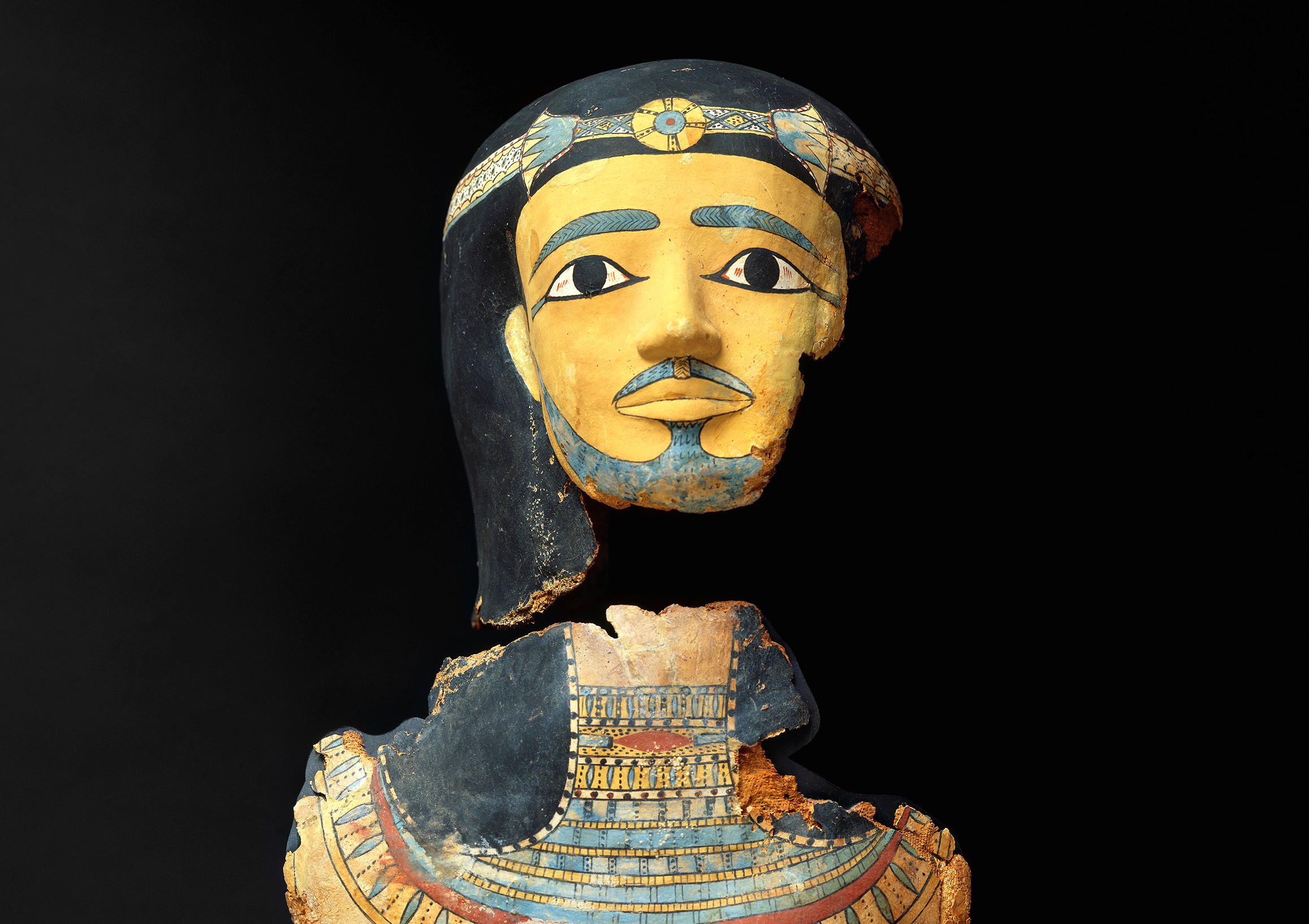For just a brief time, a healthy beard and moustache were the quintessential signs of manliness.
The men of means in ancient Egypt could have it all.
On one hand it was important that they be portrayed in the traditional 'male' role: strutting around, looking young, proud, fit and virile. However that didn't mean they couldn't enjoy looking fabulous as well.
And they went to a lot of effort to look great: elaborate wigs, fine jewellery and stylish make-up were the norm for men who had the wealth to afford it. I imagine an ancient Egyptian nobleman, magically transported to the 21st century would find modern male format attire rather dull.
Take this guy for example. Sadly we don't know his name, but he was clearly a man of considerable wealth; those mummy masks weren't cheap.
The style of the mask tells us that this was a high official of the early Middle Kingdom, around 1950 B.C. He could afford the finer things in life - and he wanted to make sure everyone knew it.
For the most part, men were usually clean shaven - even the long beards you see sprouting from the chins of pharaohs during royal or religious ceremonies were fake, held in place with a strap.
However, moustaches and beards did occasionally drift into fashion for a short time. During the early Old Kingdom, men were often depicted wearing thin, Clark Gable moustaches. Much later, in the New Kingdom, statues of high officials had short, stubby goatee underneath their chins.
Full beards are more often associated with Egypt's neighbours in the Middle East and Libya, however, for a brief period in the early Middle Kingdom, coffin masks displayed a healthy beard and moustache combination.
We don't know much about the example here, beyond that it probably came from the limestone hills on the west bank of the Nile in Asyut, almost midway between Cairo and Aswan. The excavations there were largely unrecorded.
The artist of this mask paid careful attention to details, such as the bristles of the beard and moustache, both stippled in black over a blue background. Why blue? The Egyptians believed that the hair of the gods was made of lapis lazuli, a blue, semi-precious stone
This hirsute mummy mask is now in the collection of the Museum of Fine Arts in Boston, Massachusetts. (Accession number 1987.54)
Each November, millions of men around the world sprout the best moustache they can muster, to turn themselves into walking, talking billboards for men's health. I like to think that the Middle Kingdom nobleman who sported this fancy mummy mask for almost 4,000 years would have been one of them.
